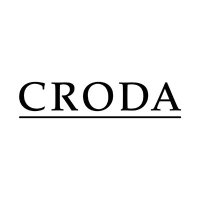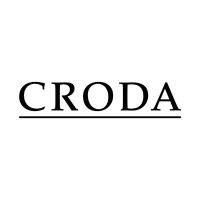
Croda International PLC
LSE:CRDA


| US |

|
Johnson & Johnson
NYSE:JNJ
|
Pharmaceuticals
|
| US |

|
Berkshire Hathaway Inc
NYSE:BRK.A
|
Financial Services
|
| US |

|
Bank of America Corp
NYSE:BAC
|
Banking
|
| US |

|
Mastercard Inc
NYSE:MA
|
Technology
|
| US |

|
UnitedHealth Group Inc
NYSE:UNH
|
Health Care
|
| US |

|
Exxon Mobil Corp
NYSE:XOM
|
Energy
|
| US |

|
Pfizer Inc
NYSE:PFE
|
Pharmaceuticals
|
| US |

|
Palantir Technologies Inc
NYSE:PLTR
|
Technology
|
| US |

|
Nike Inc
NYSE:NKE
|
Textiles, Apparel & Luxury Goods
|
| US |

|
Visa Inc
NYSE:V
|
Technology
|
| CN |

|
Alibaba Group Holding Ltd
NYSE:BABA
|
Retail
|
| US |

|
3M Co
NYSE:MMM
|
Industrial Conglomerates
|
| US |

|
JPMorgan Chase & Co
NYSE:JPM
|
Banking
|
| US |

|
Coca-Cola Co
NYSE:KO
|
Beverages
|
| US |

|
Walmart Inc
NYSE:WMT
|
Retail
|
| US |

|
Verizon Communications Inc
NYSE:VZ
|
Telecommunication
|
Utilize notes to systematically review your investment decisions. By reflecting on past outcomes, you can discern effective strategies and identify those that underperformed. This continuous feedback loop enables you to adapt and refine your approach, optimizing for future success.
Each note serves as a learning point, offering insights into your decision-making processes. Over time, you'll accumulate a personalized database of knowledge, enhancing your ability to make informed decisions quickly and effectively.
With a comprehensive record of your investment history at your fingertips, you can compare current opportunities against past experiences. This not only bolsters your confidence but also ensures that each decision is grounded in a well-documented rationale.
Do you really want to delete this note?
This action cannot be undone.

| 52 Week Range |
3 332
5 092
|
| Price Target |
|
We'll email you a reminder when the closing price reaches GBX.
Choose the stock you wish to monitor with a price alert.

|
Johnson & Johnson
NYSE:JNJ
|
US |

|
Berkshire Hathaway Inc
NYSE:BRK.A
|
US |

|
Bank of America Corp
NYSE:BAC
|
US |

|
Mastercard Inc
NYSE:MA
|
US |

|
UnitedHealth Group Inc
NYSE:UNH
|
US |

|
Exxon Mobil Corp
NYSE:XOM
|
US |

|
Pfizer Inc
NYSE:PFE
|
US |

|
Palantir Technologies Inc
NYSE:PLTR
|
US |

|
Nike Inc
NYSE:NKE
|
US |

|
Visa Inc
NYSE:V
|
US |

|
Alibaba Group Holding Ltd
NYSE:BABA
|
CN |

|
3M Co
NYSE:MMM
|
US |

|
JPMorgan Chase & Co
NYSE:JPM
|
US |

|
Coca-Cola Co
NYSE:KO
|
US |

|
Walmart Inc
NYSE:WMT
|
US |

|
Verizon Communications Inc
NYSE:VZ
|
US |
This alert will be permanently deleted.
 Croda International PLC
Croda International PLC
Croda International PLC
Investor Relations
In the heart of Britain, Croda International PLC has crafted a narrative of innovation and sustainability within the specialty chemicals industry. Founded in 1925, the company initially rode the soap manufacturing wave but has since transformed into a global powerhouse by focusing on niche markets where it can exert its expertise. Croda has adeptly positioned itself in three key sectors: Personal Care, Life Sciences, and Performance Technologies. Its business model thrives on leveraging scientific research to create high-performance ingredients designed to elevate an array of consumer and industrial applications. Croda’s commitment to leveraging chemistry and natural resources, often derived from renewable sources, sets it apart in a market that increasingly values sustainability.
Croda’s financial success emanates from its ability to capture value through innovation and product differentiation, a strategy that has culminated in a diverse portfolio that meets complex customer needs. In Personal Care, Croda's ingredients fuel the beauty and cosmetic industries with components that promise efficacy and safety, often carrying sustainability credentials. The Life Sciences division delves deeper into agricultural and pharmaceutical solutions, providing crop-enhancing chemicals and vital drug delivery systems, which are crucial for advancing food production and healthcare. Meanwhile, Performance Technologies focuses on delivering materials that enhance the reliability and efficiency of industrial products such as lubricants and coatings. This broad yet specialized approach allows Croda to maintain robust growth by integrating cutting-edge science with a keen awareness of market demands, ensuring its products remain indispensable across various sectors around the globe.

In the heart of Britain, Croda International PLC has crafted a narrative of innovation and sustainability within the specialty chemicals industry. Founded in 1925, the company initially rode the soap manufacturing wave but has since transformed into a global powerhouse by focusing on niche markets where it can exert its expertise. Croda has adeptly positioned itself in three key sectors: Personal Care, Life Sciences, and Performance Technologies. Its business model thrives on leveraging scientific research to create high-performance ingredients designed to elevate an array of consumer and industrial applications. Croda’s commitment to leveraging chemistry and natural resources, often derived from renewable sources, sets it apart in a market that increasingly values sustainability.
Croda’s financial success emanates from its ability to capture value through innovation and product differentiation, a strategy that has culminated in a diverse portfolio that meets complex customer needs. In Personal Care, Croda's ingredients fuel the beauty and cosmetic industries with components that promise efficacy and safety, often carrying sustainability credentials. The Life Sciences division delves deeper into agricultural and pharmaceutical solutions, providing crop-enhancing chemicals and vital drug delivery systems, which are crucial for advancing food production and healthcare. Meanwhile, Performance Technologies focuses on delivering materials that enhance the reliability and efficiency of industrial products such as lubricants and coatings. This broad yet specialized approach allows Croda to maintain robust growth by integrating cutting-edge science with a keen awareness of market demands, ensuring its products remain indispensable across various sectors around the globe.





























 You don't have any saved screeners yet
You don't have any saved screeners yet
